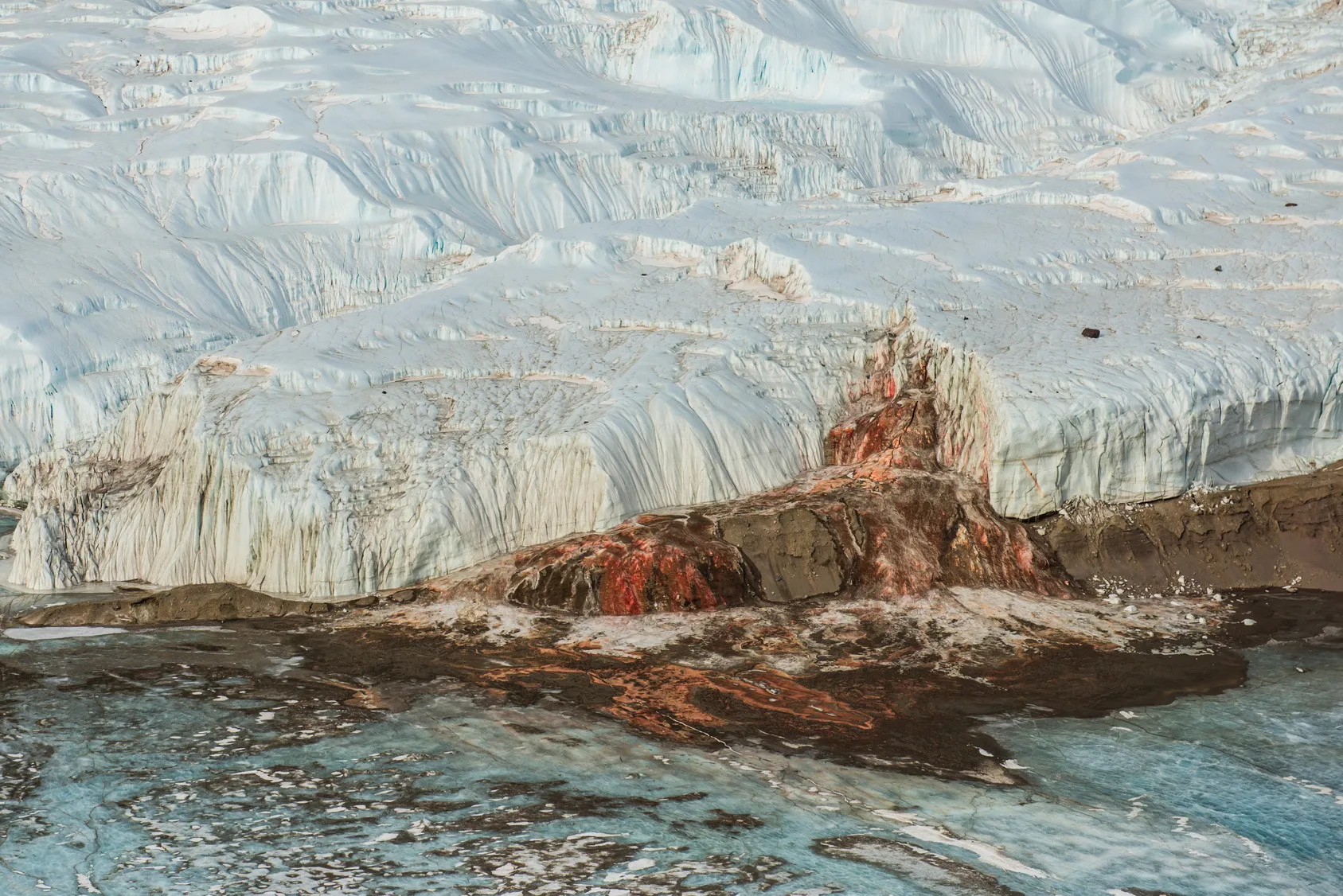By: Kaydence Yung
There are many wonderful waterfalls around the world, but none of them are as unique as Antarctica’s Blood Falls. The accordingly named waterfall, which flows from the top of the Taylor Glacier, spurts out bright red water. The existence of this waterfall has been known for over a century. The reason behind its crimson waters, however, has remained a mystery. But now, a team led by W. Berry Lyons, who is from Ohio State University, may have finally found the answer.
Griffith Taylor, an Australian geologist, discovered the Blood Falls during an expedition in 1911. He attributed its color to red algae, but further research disproved this theory. The blood-red color was thought to be most likely from iron in the subglacial lake that feeds into the waterfall. When Lyons and his team analyzed the water, they only found traces of iron-rich nanospheres, which are 100 times smaller than red human blood cells and are created by the micro bacteria that reside in the subglacial lakes. The nanoparticles oxidize and give the water flowing to the Blood Falls its red hue.
“As soon as I looked at the microscope images, I noted that there were these little nanospheres and they were iron-rich, and they have lots of different elements in them besides iron, silicon, calcium, aluminum, sodium – and they all varied,” the study’s co-author Ken Livi said. “In order to be a mineral, atoms must be arranged in a very specific, crystalline structure. These nanospheres aren’t crystalline, so the methods previously used to examine the solids did not detect them.” This means that he nanospheres were not detected because they lack the crystalline structure that is necessary to be classified as a mineral. Previous methods used to examine the solids were unable to detect them due to this lack of structure.
The researchers who published their findings in the journal, “Frontiers in Astronomy and Space Sciences”, believe their discovery may have implications beyond Earth. The subglacial lake that feeds Blood Falls is very salty and has no light nor oxygen. This is similar to the conditions on the Red Planet. It has managed to harbor and isolate microbial ecosystems for millions of years. This suggests that there could be humans or other living things on Mars and other planets, but we don’t have the right equipment yet to detect it.
“Our work has revealed that the analysis conducted by rover vehicles is incomplete in determining the true nature of environmental materials on planet surfaces,” said Livi. “This is especially true for colder planets like Mars, where the material formed may be nanosized and non-crystalline. Consequently, our methods for identifying these materials are inadequate. To truly understand the nature of our rocky planets’ surfaces, a transmission electron microscope would be necessary. But it is currently not feasible to place one on Mars.”











